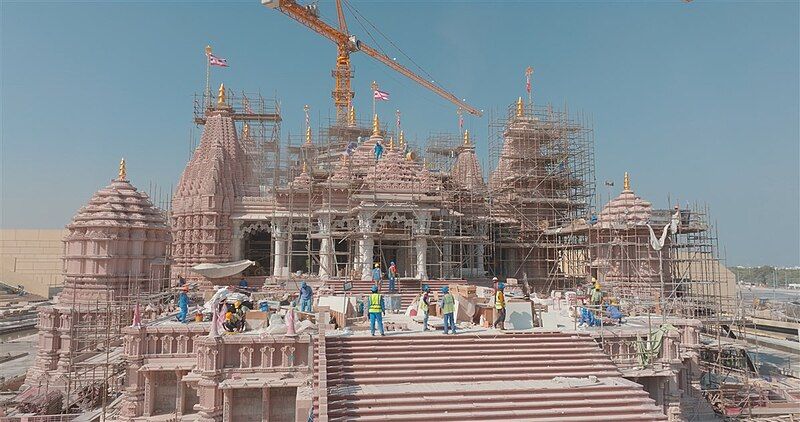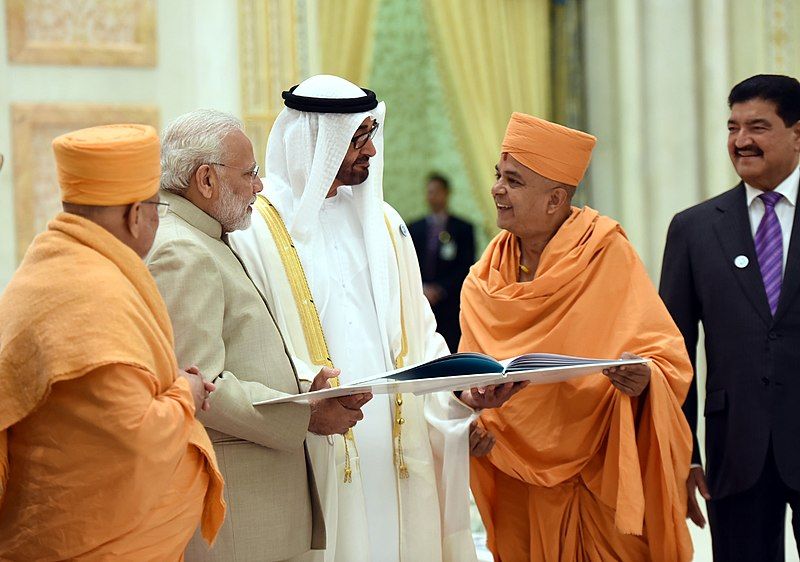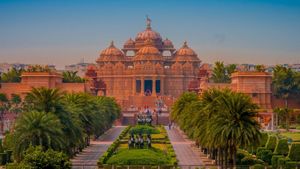The inauguration of the first Abu Dhabi Hindu temple marks a historic moment, not just for the Hindu community in the United Arab Emirates (UAE) but for the promotion of multicultural harmony and religious acceptance globally. Indeed, situated in the Abu Mureikhah area, this BAPs temple is a masterpiece of architectural splendour and spiritual sanctity.
Here is all you need to know about the Abu Dhabi Hindu temple
Constructed on a generous donation of 13.5 acres by the Crown Prince of Abu Dhabi, Sheikh Mohamed bin Zayed Al Nahyan, during Prime Minister Narendra Modi's visit in 2015, the temple embodies the spirit of friendship and mutual respect between India and the UAE. The land, gifted in a gesture of goodwill, underscores the UAE's commitment to fostering a diverse and inclusive society.
Reportedly, constructed with an estimated cost of INR 700 crore, the Swaminarayan temple stands as a testament to meticulous craftsmanship and international cooperation.
The temple's design draws inspiration from ancient Vedic architecture, with pink Rajasthan sandstone and white Italian marble stone skillfully carved in India before being assembled in the UAE. The BAPS or Bochasanwasi Akshar Purushottam Swaminarayan Sanstha, a Hindu sect known for its devotion to Swaminarayan as an avatar of Lord Krishna, spearheaded this grand project. Each of the temple's seven spires represents an Emirate of the UAE, symbolising the union of the Emirates and the integration of the temple into the fabric of the country.
The foundation of faith and innovation
Remarkably, the temple's foundation incorporates around 100 sensors, with additional sensors placed in various areas to monitor seismic activity, showcasing a blend of traditional architecture with modern technology. In keeping with the construction principles of the Ayodhya Ram Mandir, the builders eschewed the use of iron and steel, opting instead for traditional materials that lend the structure an aura of timeless beauty.
A community effort

The foundation stone was laid by PM Modi in 2017, reflecting the strong bilateral relations between India and the UAE. The UAE Government's allocation of another 13.5 acres in January 2019 further facilitated the temple's development. Designed to be more than just a place of worship, the temple includes prayer halls, a visitor centre, thematic gardens, and spaces for community gatherings. It also features classrooms, exhibition centres, and play areas for children, emphasising the temple's role as a centre for learning and cultural exchange.
Inauguration and accessibility
To ensure a smooth inauguration event, a registration portal has been established, with transportation arranged from all emirates. The event represents a collaborative effort by over 150 Indian community organisations in the UAE, highlighting the strong sense of community and cooperation among Indians residing in the country.
A testament to love and friendship

The temple's seven shrines, devoted to various Indian Gods and Goddesses, represent the diversity of India's spiritual heritage. BAPS Swaminarayan Mandir saint Brahmviharidas Swami's words capture the essence of the temple's creation: a manifestation of natural love and friendship, borne out of the lasting impression of integrity made by Indians in the UAE. The temple, he asserts, is a product of mutual respect and admiration between the people and rulers of both nations, who share a deep appreciation for India's rich culture.
The first Hindu temple in Abu Dhabi stands as a beacon of hope, unity, and spiritual solace. It is a place where love transcends boundaries, where cultures converge in celebration of shared values, and where the spirit of inclusivity shines brightly. This temple is not just a landmark but a bridge between nations, a symbol of the enduring friendship between India and the UAE.



_1682545640773_thumb_300.png)

